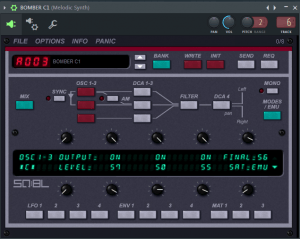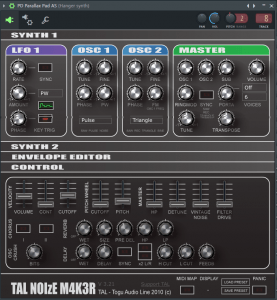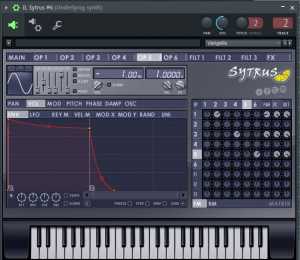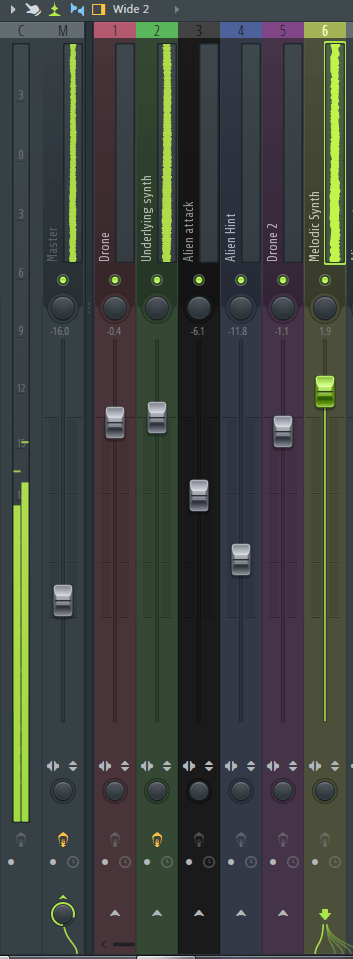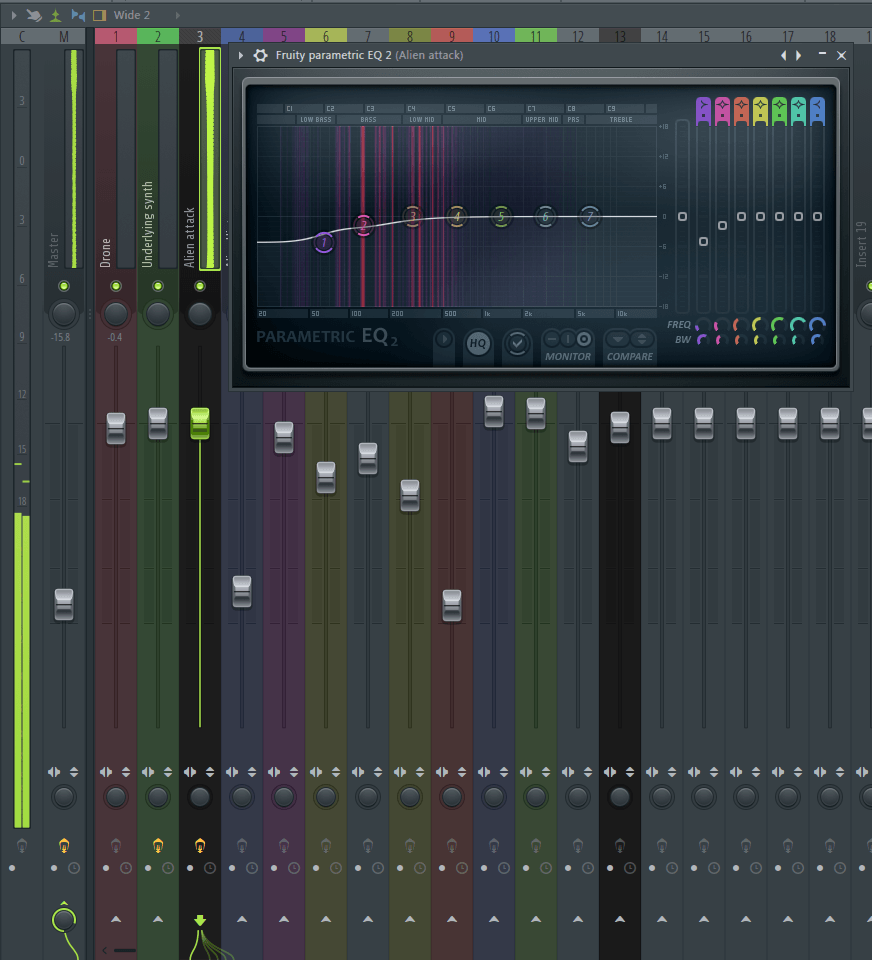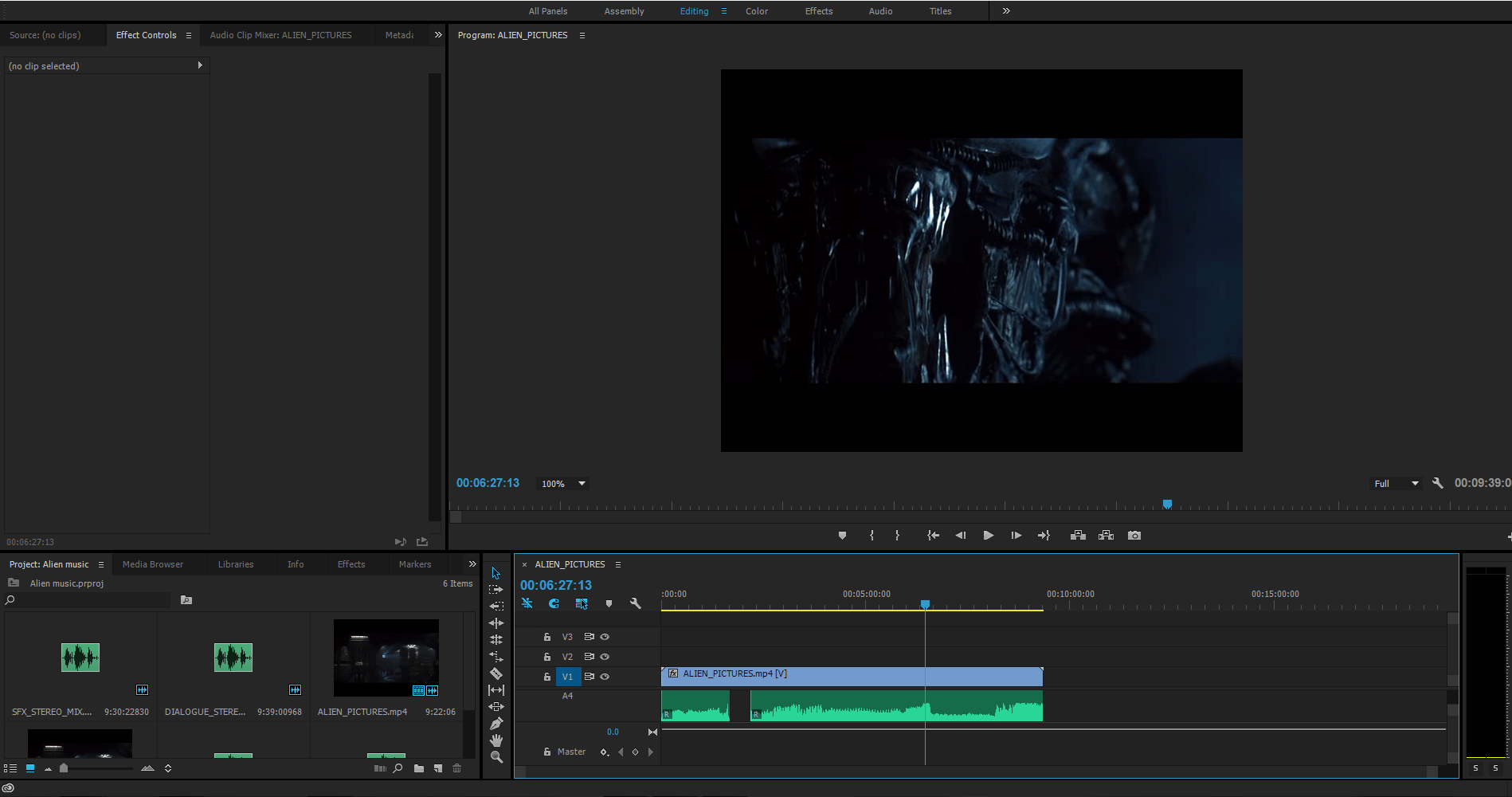Prior to producing the electronic music for Alien, I learnt a range of production and mixing techniques from various sources to underpin my approach to composing.
Before producing the Alien music I researched production techniques from a YouTube tutorial called ‘Aggressive growling bass using FL Studio 11’s GMS synth’ by Computer Music Magazine. This tutorial provides a step by step approach to creating an aggressive growling bass, and gives information on how you can create your own style of growling bass. For the brutal scene where the Alien kills Brett, I wanted to further evoke the feeling of shock. To achieve this I wanted a very harsh synthesizer sound which built up to its peak when the Alien attacks and drags Brett away.
I adopted most of the steps described in the video like boosting the bass, applying distortion and turning up distortion to around 0.27%.
The main differences in my case was having a higher level of modulation which created a more harsh distorted sound. In addition, I applied a static level of automation to the filter cutoff until the Alien attack. This created a consistent muffled growling bass sound up to the Alien attack. When the Alien appears and attacks the automation allows more of the harsh sounds to come out.
I utilized Trent Reznor’s approach of getting inside the head of characters and working from the feelings/emotions evoked in the scene. This approach is also similar to Debbie Wiseman’s, where she stresses the importance of the emotions in film. For Each scene, I identified the feelings of the characters as well as the connotations of the environment. Common feelings I worked from were anticipation, shock and fear. For example, during the scene where Brett wanders into the hanger and his heartbeat gradually increases, I used that as a que to begin the bass notes and reflect Brett’s feelings of unease. A further example is how the harsh bass sounds come out as Brett witnesses and gets attacked by the alien. Essentially these bass notes reflect Brett’s emotional state.
Below are a range of VSTis like SQ8l, TAL noizemaker and IL Sytrus which I used to explore and construct the sounds which reflected the emotions brought forth by the scene.
With regards to composing, I utilized John Carpenter’s approach of having a simple composing style and improvising. All of the melodies contain simple note or chord progressions which I improvised towards reflected the emotions of the scene. For example, below is the simple melody I composed in the midi piano roll for the computer control room scene towards the end.
To improve my Midi programming skills, I learnt more about the fundamental aspects of FL studio’s piano roll from a Youtube tutorial titles ‘FL Studio Basics 5: The Piano Roll’ by SeamlessR.
From this I learnt more about how to adjust note parameters like volume, velocity and panning in the piano roll. I knew how to do this via the instrument and playlist itself but this tutorial showed me how to do it in the piano roll which made the overall workflow much quicker.
With regards to mixing I utilized 2 techniques from Mike Senior’s ‘Mixing Secrets for the Small Studio‘.
In terms of Level Balancing Senior writes ‘Try to zero in on what the level of each new instrument means for the mix as a whole, and be aware that a good balance usually involves some kind of tradeoff: on the one hand, you want the track loud enough that you can hear all the things you really love about the individual sound; on the other hand, you need to keep the track low enough in the mix that is doesn’t obscure the merits of more important instruments that are already present.’ (Senior, 2011, 127). In my case I made certain instruments more prominent in the mix than others. For example, during the beginning scene when the team finds the cat, I made the eerie synthesizer the loudest part of the mix to emphasis the feeling of fear and anticipation. In addition, I didn’t make this instrument so loud that it masked the dialogue and sound effects. Below is a screenshot of how I mixed the eerie synthesizer, labelled ‘melodic synth’ with the other instruments.
With regards to equalization Senior writes ‘The main purpose of equalization at mixdown is to address frequency domain problems with the mix balance…’ (Senior , 2011, 188). Senior further explain frequency masking as he writes ‘‘To put it simply, if one instrument in your mix has lots of energy in a certain frequency region, then your perception will be desensitized to that frequency region of the other instruments. ‘(Senior , 2011, 172). In my case I mixed by avoiding frequency masking with other instruments as well as the dialogue and sound effects in the film. Below is a screenshot of the subtractive EQ I applied to the growling bass titled ‘Alien attack’. In this case I removed low frequencies to make space for the low frequencies in the hanger room ambience in the sound effects.
Below is a screenshot of my project in Adobe premiere to sync my music in time with the film, sound effects and dialogue.


